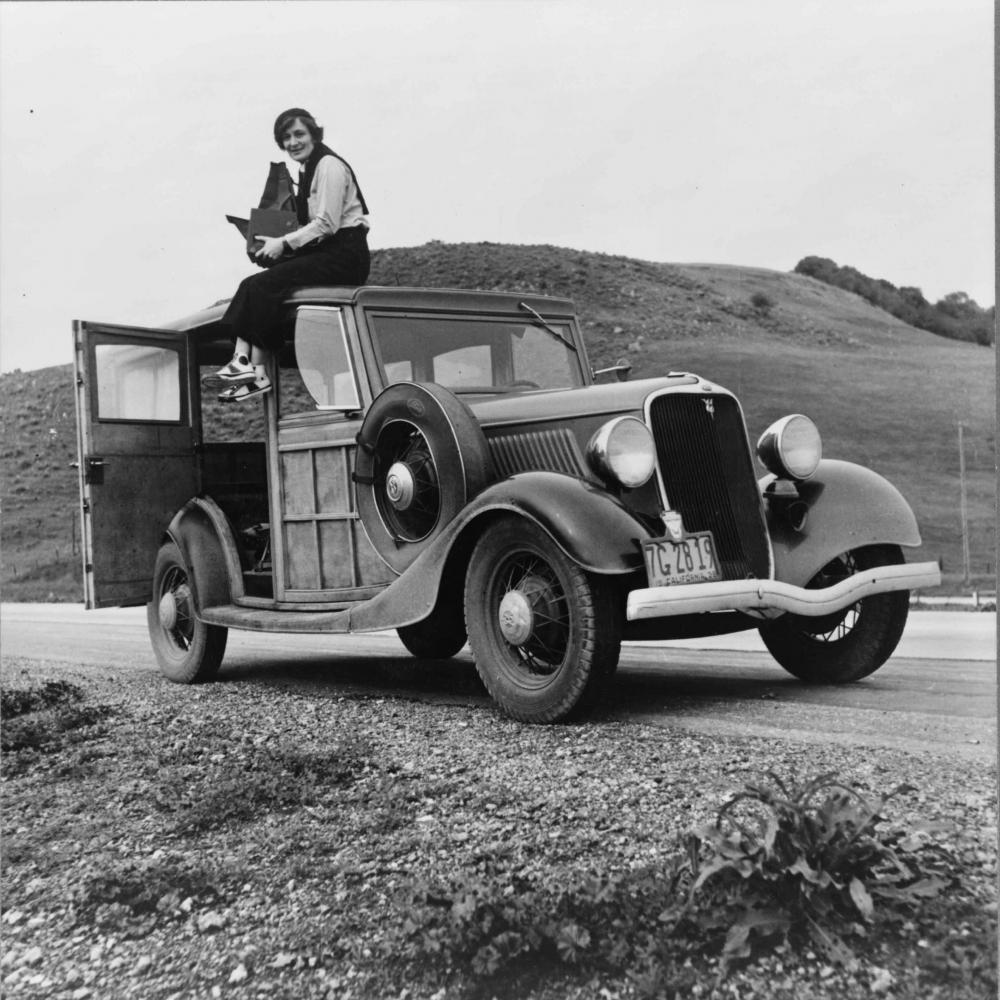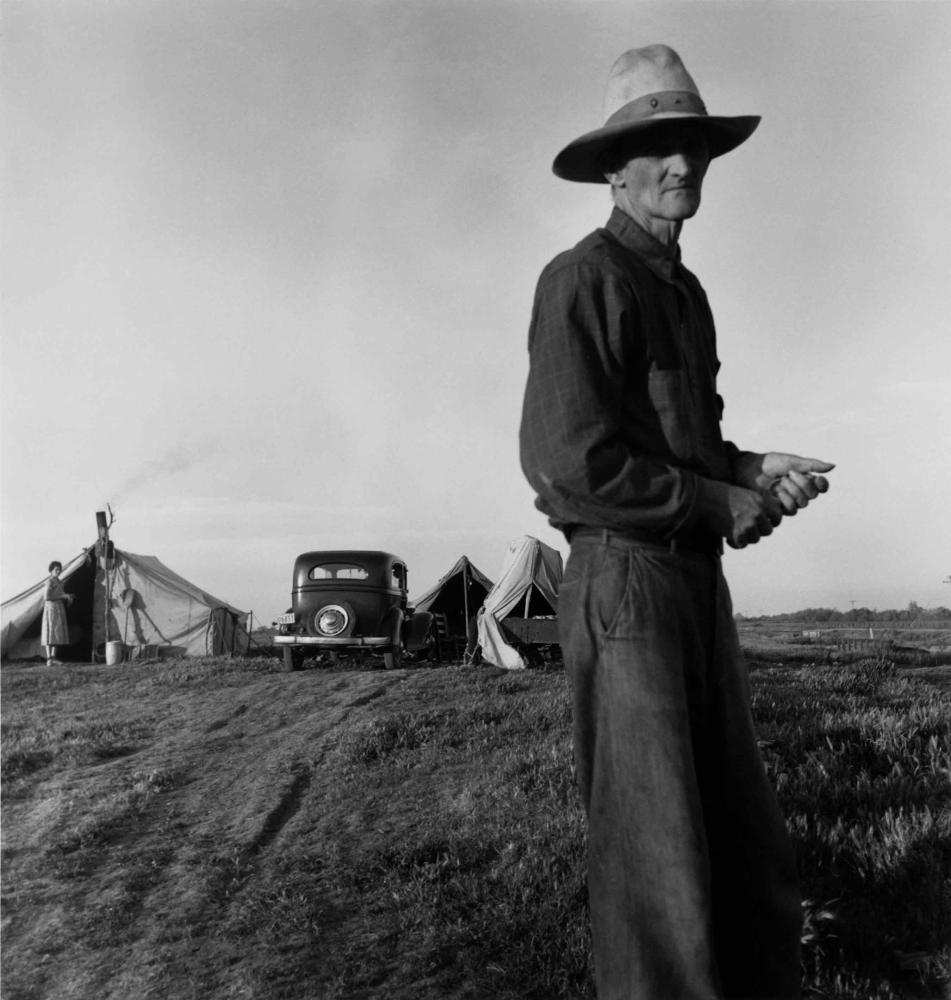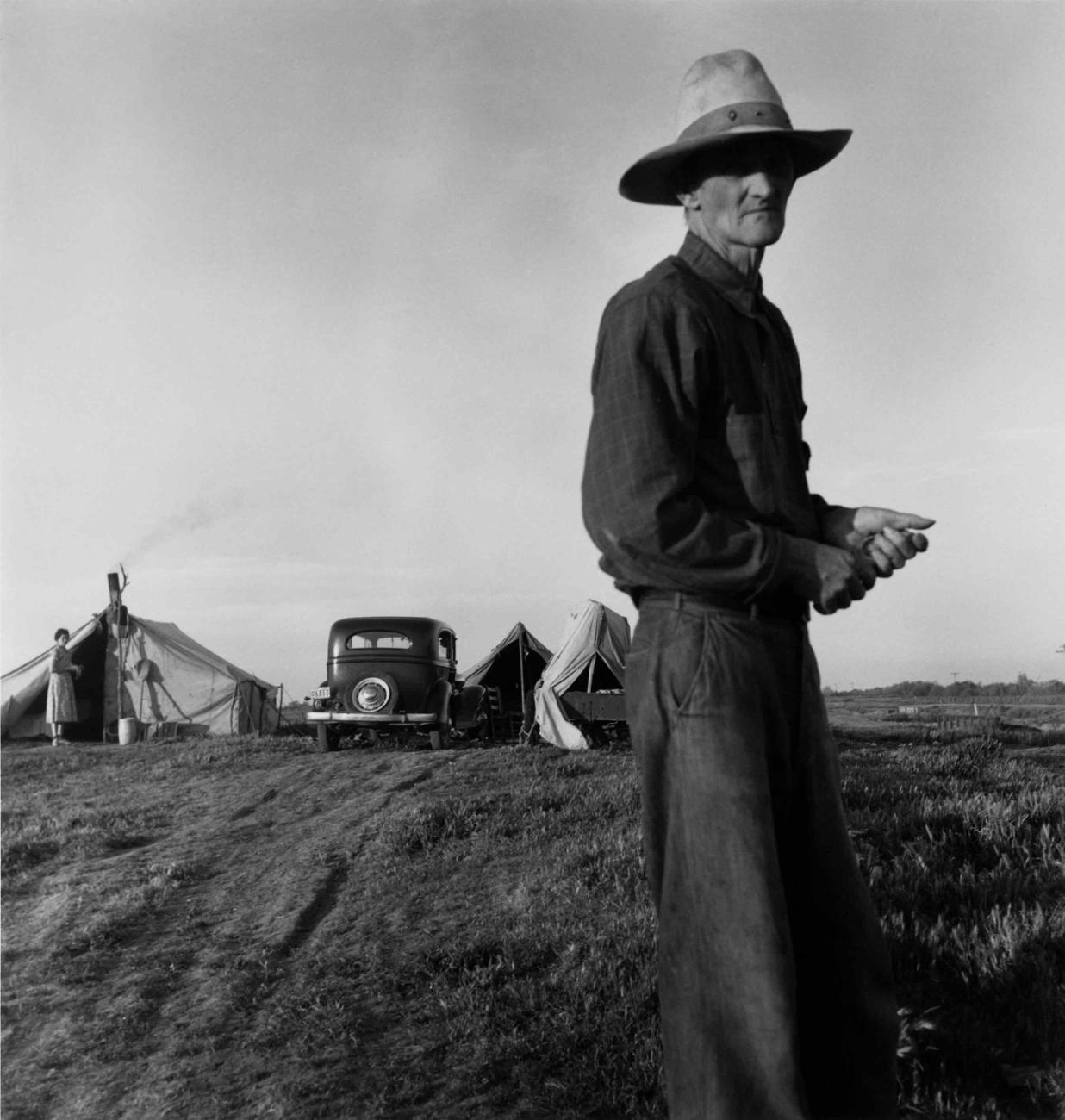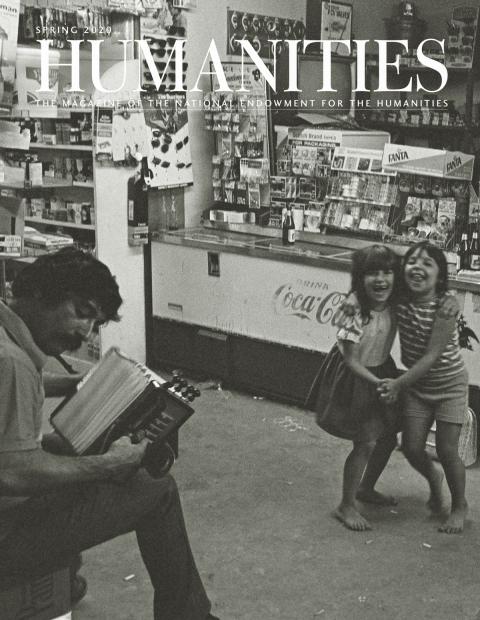Oklahoma The cheerful banter of suburban schoolchildren on a field trip fills the museum halls as curators put final touches on an exhibit of Dorothea Lange photographs. One image, Damaged Child, is of a disheveled and abused young girl photographed not far away in the shack-town of Elm Grove.
She’s easily the age of the visiting school kids and is wearing a dirty, flour-sack shirt. She has a faint hint of a smile beneath her battered eyes and scarred nose.
“It’s striking and unnerving at the same time,” says Kimberly Roblin, director of the Dickinson Research Center and curator of archives at the National Cowboy and Western Heritage Museum in Oklahoma City. “Every time I look at that picture I see something different.”
The exhibition tells many stories through its photographs, including the story of the photographer. Dorothea Nutzhorn contracted polio at age seven and walked with a limp the rest of her life. Her world took another turn five years later when her father abandoned the family. She took her mother’s maiden name, Lange, and wandered the streets of New York while her mother worked. She learned to observe without intruding. Her sense of empathy developed early and passed easily into her photographs.
The Depression became very real when Lange left her successful San Francisco portrait studio in 1933 to photograph unemployed men in bread lines. She became a salaried employee of the government in 1935 and began documenting the plight of migrant workers in an effort to gain congressional support for government relief programs.
An estimated 300,000 Americans, mostly from southern and midwestern states, were driven by desperation to travel to California in search of a better life. The Dust Bowl had rendered their land barren, and the Great Depression robbed others of their savings and livelihoods. They were called Okies, a nickname for stoop laborers.
“For Oklahomans, there is immediacy to the photos. The Dust Bowl is part of our heritage,” says Roblin. “When I see the photos, I see fellow Oklahomans. You see their struggles and their resilience.”
Roblin curated “Dorothea Lange: Politics of Seeing,” the traveling exhibition of about 80 Lange photographs, personal memorabilia, and historical objects on loan from the Oakland Museum of California. Earlier shows were held in London, Paris, and Nashville. The Oklahoma City show was supported by Oklahoma Humanities.
Anne Whiston Spirn was part of the exhibit’s spring lecture series. She is Cecil and Ida Green Distinguished Professor of Landscape Architecture and Planning in the Department of Urban Studies and Planning of the MIT School of Architecture and Planning.
As a college student browsing through a bookstore in Harvard Square, she discovered Lange’s photos. “Her work was a revelation to me as an undergraduate,” Spirn says. “She inspired me to combine my interests in social action, my interest in art, and my interest in photography.”
In 2008, Spirn published Daring to Look, which presents photos and captions from Lange’s 1939 fieldwork in California, the Pacific Northwest, and North Carolina.
In doing research for her book, Spirn discovered never-published “general captions” tied by negative number to Lange’s photography. Those captions ranged from a few descriptive paragraphs to several pages.
“Many are unaware that she was a gifted writer as well as a gifted photographer. Her descriptions are really good, ethnographic, journalistic writing that tells a story about a family with details that bring alive the kind of life they were living and their experiences.”
Spirn, carrying the field notes, photographs, and captions, returned to many of the locations Lange photographed.
“I was shocked by much of what I found,” Spirn says. “What really struck me is how in the rural places that she had been photographing I saw many of the same conditions when I went back. I saw encampments of homeless people in Fresno that looked very much like the homeless encampments she had photographed nearby. I saw poverty that rivals any back then. I found conditions for migrant workers in the Imperial Valley very much like what she had photographed.”
“I felt like she was holding up a mirror that still pertains today and that’s pretty damning, if you think about it,” Spirn says. “We like to think we’ve made a lot of progress in social and environmental conditions, but we really haven’t.”
Although much of the Oklahoma show concerns Lange’s Depression-era work, her 1942 assignment by the War Relocation Authority is also represented. She documented the imprisonment of thousands of Americans of Japanese descent in California.
The exhibit showcases Lange’s images of booming World War II shipyards, the ugly side of California’s postwar suburban sprawl, race, and the criminal justice system.
“There is no artist who better exemplifies the power of storytelling through art; it is said she saw herself as a social activist first and photographer second, with her camera as a tool for change,” says Natalie Shirley, the museum’s president and CEO.
The words of author John Steinbeck, the music of Woody Guthrie, and Lange’s photographs are enduring artistic statements of the Dust Bowl years. A handwritten note, sent by Steinbeck on July 3, 1965, a few months before Lange’s death, is included in the exhibit’s memorabilia.
“We have lived in the greatest of all periods. If the question were asked, if you could choose out of all time, when would you elect to have lived, I would surely say—the Present. Of course we don’t know how it comes out. No one ever does. The story ends only in fiction and I have made sure it never ends in my fiction.”
Lange’s most-published photograph, Migrant Mother, is part of the exhibit. It was taken in 1936 at Nipomo, at a pea-picking camp along a California highway. Lange was working for the Resettlement Administration, later named the Farm Security Administration.
The Migrant Mother, only years later identified as thirty-two-year-old Florence Owens Thompson, was a Native American born in Oklahoma before statehood. She had seven children when Lange met her.
She was living in a tent with the children. In an interview in Popular Photography magazine, Lange said she had been away on assignment for a month and was driving home to Berkeley when she saw a sign for a pea-pickers’ camp. She kept driving for another 20 miles before she turned around, “following instinct, not reason,” and returned to the camp.
Using her large-format camera and tripod, Lange made five exposures, each one getting closer to the woman and her children. The San Francisco News used the picture, which soon was published worldwide and became her most celebrated image.
“This almost didn’t happen,” says Roblin. The mother and her family “were only there because they had car trouble. This chance meeting between these two strong women produced this iconic photo.”




